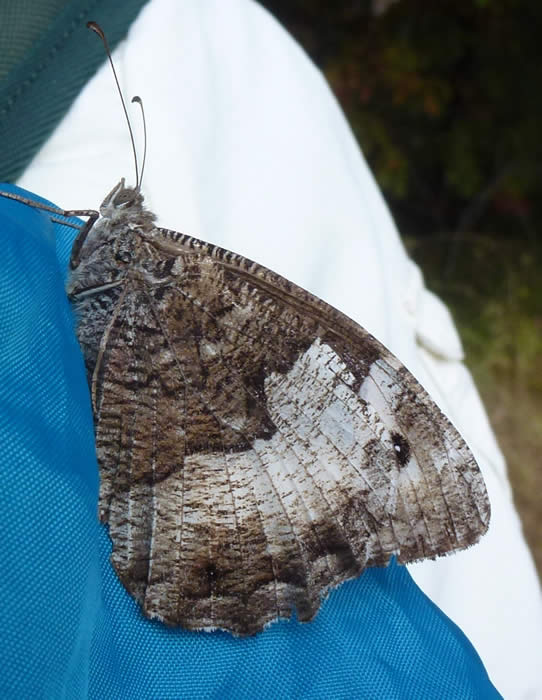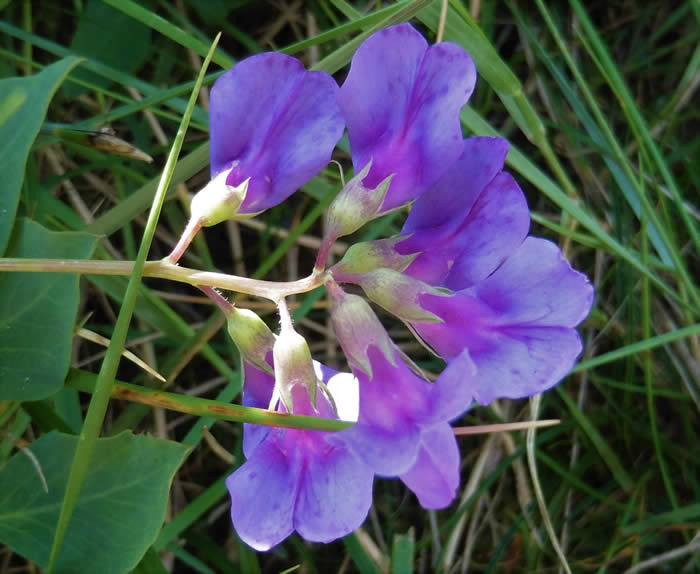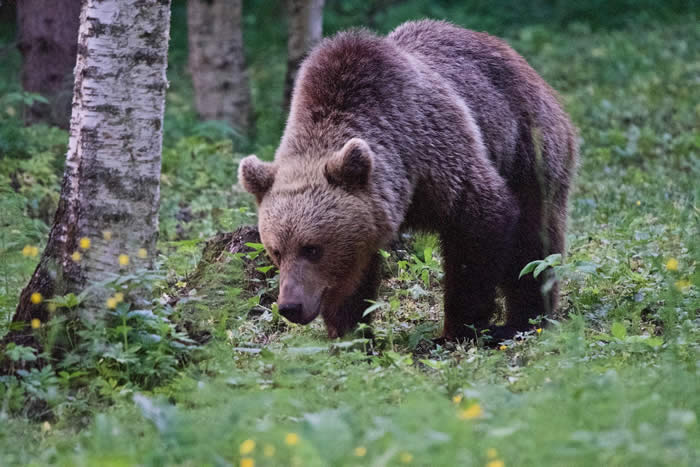Honeyguide news archive 2019

Simon Tonkin and Niki Williamson, Honeyguide leaders in The Gambia, receiving in December 2019 a certificate of appreciation from the Gambia Bird Watchers Association to mark their support for mangrove restoration.
Honeyguide played a part in this: our conservation donation of £460 from our holiday in December 2018 went to this project, and we will be supporting it again in December 2020. Gambia Bird Watchers Association played tribute to Inglorious Bustards/Honeyguide Holidays and said "We're extremely grateful for your generous donation towards the Kotu Creek mangrove restoration project."
New arrangements for flights for this holiday are in place following the demise of Thomas Cook. Details on The Gambia holiday page.
More news from Valencia: our previous news item (scroll down to read it) mentioned how local Valencia leader Pau Pucio is working to set up a butterfly nature reserve. This is a collaboration between butterfly conservation NGO Zerynthia, who we supported though our Picos de Europa holiday, and Gandia local council, the first butterfly reserve in Valencia Region.
The reserve was inaugurated in early December for the general public, regional TV and local politicians. They planted strawberry and fig trees to help the local population of two-tailed pasha. Pau says that the area suffered a nasty forest fire in August 2018 (the largest in Spain in 2018), so they didn’t expect to see any caterpillars, but they managed to find six in two small strawberry trees (photo, right). We plan to visit the area during our Valencia holiday in March, on which we still have places.

Pau Lucio (right of the sign) at the opening of Zerynthia's butterfly reserve in Valencia region, 7 December 2019. [You can also view these photos on Facebook.]
While rain was sweeping across the UK, it was dry, if a little windy, for Honeyguiders in Algarve & Alentejo in early November. It was the numbers of birds and good views that were most impressive, says leader Rob Macklin. These included some 170 glossy ibises dropping into Salgados lagoon, 120 griffon vultures in a thermal, 80 Audouin’s gulls, little and great bustards near Castro Verde, lots of flamingos and egrets. Good views of a bluethroat and a little bittern were also highlights (below), as were many migrating white storks, booted and short-toed eagles. Welcome to Lara Broom from SPEA (BirdLife Portugal) to the Honeyguide team, as well as old friend Domingos who showed his usual expertise by finding a horseshoe whip snake.
The conservation donation of £300 from this holiday went to SPEA (BirdLife Portugal). This year we will be supporting the promotion of SPEA in the Algarve, namely funding a stand that, with the help of a local group of supporters, SPEA says will: "increase our street actions to promote and raise awareness about SPEA’s work in the Algarve. We need more members everywhere, but especially in the Algarve, where there are still lots of damaging developments to fight against." That’s the final donation to a conservation project in 2019. End of year sums show that the donations linked to Honeyguide holidays in 2019 totalled £6,840, and our running total for donations since 1991 is £134,062.
Bluethroat and little bittern in Algarve & Alentejo (David Bennett). More of David's photos here;
holiday report for Algarve & Alentejo here.
South Africa: spring flowers: Geoff Crane - Honeyguide's regular leader in South Africa - sent lots of lovely photos to promote our 'Spring flowers in South Africa' holiday, 22 August to 4 September 2020. We used several photos in the Honeyguide brochure and elsewhere on this website but there are glorious flowers to spare. These are easy to see in a Facebook photoset. It includes the names of the flowers featured in the collage below.

News from Valencia: to mark World Migratory Bird Day in October, local leader Pau Lucio was involved with running a family activity about bird ringing in the hills of Gandia, in an area our Valencia holiday visits. Photos from the event and some other recent bird photos are grouped in a set of pictures on Honeyguide’s Facebook here.
Pau is joining forces with butterfly conservation NGO Zerynthia and Gandia local council to set up the first butterfly reserve in Valencia Region. “We will reforest a burned area with strawberry trees, fig trees and other Mediterranean trees and shrubs to attract different species of butterflies, among them the two-tailed pasha,” says Pau. We are more than half-full for our Valencia holiday in March, with room for a few more still.

Pau (left) with a young helper releasing a ringed robin.
Black-winged kite and violet dropwing dragonfly: sounds like central Iberia. Actually both were on our Dordogne holiday in late September. The violet dropwing was on the arrival day, the black-winged kites while the Stansted contingent waited for their delayed flight from Bergerac. When the sun shone, which wasn't all the time, out came the butterflies: 12 species on one patch of mint was a highlight. A nice surprise was autumn lady's tresses: one more orchid for an area we know is orchid-rich in May. As always, the atmosphere at Castang and the hospitality from Cathy, Keith and Olivia at Castang, on what we assume is our final visit, will remain the fondest memory. More photos on Facebook; holiday report here Dordogne 2019.

Spirals of autumn lady's tresses; broad scarlet (scarlet darter); a usually fast-flying great banded grayling rests on a group member's jacket.
Honeyguide’s support for Refuges LPO through holidays in France is longstanding, from our first year in The Lot back in 1991 up to the Dordogne holiday in September 2019. In the early days, some of the work was a campaign to prevent shooting on privately owned land irrespective of the landowner’s wishes.
With that battle won, the focus of Refuges LPO in more recent years has been more about helping nature at home. Below is a summary of the project’s considerable achievements, from an LPO circular, including an amazing number of ‘refuges’ noted in the diagram. Sometimes nature conservation needs loud voices. Sometimes, like this, it needs steady, patient, good work.
 |
■ 25,000 refuges in total ■ 40,000 hectares of land protected ■ 593 balconies ■ 349 communities ■ 21,825 gardens ■ 148 businesses ■ 1,744 institutions |
Our first ever holiday in Falsterbo (Sweden) was every bit as good as we hoped. A highlight for everyone was a stream of 70 honey buzzards low overhead. Migrating sparrowhawks were so frequent that they became routine. Flocks of yellow wagtails were a great feature, often settling in the open, and there were always tree pipits and skeins of geese on the move. Golden and white-tailed eagles showed well.
We added a taste of Honeyguide to what was mostly a birdwatching holiday with flowers, butterflies and other wildlife. The hotel and Swedish food & hospitality went down well. It was a full first-time immersion with a group of Honeyguiders for main leader Christopher Hall and he came out smiling! We'll be in a sister hotel in 2020 but otherwise there's nothing to change: there are still vacancies as I write, though places are going fast.

Wheatear (Christopher Hall); a migrant sparrowhawk settles on a sign; redstart.


Large-flowered hemp-nettle, edible frog, sea pea. Holiday report here.
 |
Information about Buglife, the Invertebrate Conservation Trust, was enclosed with Honeyguide's brochure for 2020. In previous years we've included information from from Plantlife, British Dragonfly Society and Butterfly Conservation. Naturally this is intended to encourage new memberships of a splendid charity that aims to “Save the small things that run our planet." |
The Picos de Europa with Pau Lucio proved a great success. We liked the family-run hotel and Boca de Huérgano itself was good for wildlife, with a wryneck calling in the morning from a regular bush-top, a huge white stork nest around the corner and both common and black redstarts in the very rural small town. Also here was the Iberian of race of pied flycatcher, a new bird for me (writes Chris) with bold white patches on the wing of the male. Meadows and easy-walking wide paths seemed to be everywhere, and often picnic sites were surrounded by flowers and butterflies. Wonderful landscapes, naturally. We plan to run the holiday again in 2020. Picos de Europa holiday report 2019.
Toadflax
Linaria triornithophora; spotted fritillary.
Picnic Picos style; alpine choughs are often tame, this one at Fuente Dé.
"Estonia definitely was our kind of country - wide expanses with very few people about!" say Honeyguiders Tim and Cheryl Hunt. Great sightings of brown bears from NaTourEst's hide are routine, but still amazing for anyone going for the first time. It proved to be an excellent year for butterflies: this stunning-looking poplar admiral is one example. A good range of birds included Slavonian grebes and scarlet rosefinches, plus wonderful flowers including many orchids in habitats such us bogs and glorious wood-meadows.


Brown bear and poplar admiral in Estonia (Cheryl Hunt). Estonia 2019 holiday report.
This year's group made it the Camargue (phew, writes Chris D) where all the expected specialities were on show from greater flamingos to white horses plus, as for any Honeyguide group, a huge variety of other birds, flowers, bugs and beasties. All three marsh terns together - whiskered, black and white-winged - must have been quite a sight. But I won't add more as you can read all about it on Chris Gibson's splendid blog or in the holiday report here.


Black-winged stilts, stripeless tree frog (Chris Gibson).
There were contrasting temperatures in La Mancha - from 34°C in La Mancha Húmeda the to 4°C in the hills of the Serranía de Cuenca, though these are extremes - but lots of wildlife everywhere. A damp April meant a good year for flowers in May, including wild peonies and the very local Orchis cazorlensis. Good views of eagle owl, white-headed ducks and gull-billed terns hunting in cereal fields were among the bird highlights. There were several ocellated lizards, surprisingly tame, and three times we found the often elusive western orphean warbler. And when the sun came out in the Serranía de Cuenca, so did the butterflies, against a brilliant scenic backdrop. And the famous windmills, of course. Some photos by Chris Durdin and local leader Pau Lucio on Facebook here and La Mancha holiday 2019 report here.

Uña lagoon in the Serranía de Cuenca.
BBC Wildlife will no longer come in a plastic wrap: it will be wrapped in paper. More here. About time: a welcome change of heart.
All the talk on Crete was of storms in February: flooded properties, bridges down, Kourtaliótiko Gorge (the usual route into Plakias) shut until two days before we arrived. But all worked well for our international group (two from New Zealand, two from the USA) and the rains meant lush and colourful hillsides of Jerusalem sage, cistuses and towering yellow spikes of giant fennel. It was a slow year for bird migration though local birds were good including Rüppell's warblers, chukars and glorious bee-eaters. Highlights included a little bittern in a ditch near the hotel and several little crakes.
Little ringed plover on nest, Damnoni Beach; Solenopsis minuta, Plakias.
More photos on Facebook and holiday report here.
Extremadura in March was as lovely as ever: the countryside wasn't as dry as Morocco (see below) though reservoir levels were low. Finca Santa Marta was a delight, with azure-winged magpies, hawfinches and a lesser spotted woodpecker active around the finca. Spring flowers provided sheets of colour and butterflies were active. Bustards get scarcer every year though we saw both species. Vultures get more numerous - they benefit from increasing cattle numbers on the pseudo-steppes - and we had good views of Spanish imperial eagle. Photos from Chris on Facebook and Honeyguider Mervin Nethercoat on Flickr. Holiday report here.
Marcelino from SEO/Birdlife gave a talk and received a donation from Honeyguide of £950. The stall is SEO's wildlife-friendly rice and pasta. (Photo, Jean Dunn).
Morocco was hot and dry for the joint Honeyguide / N&S Wildlife and Walking group in March following a winter lacking rain (much as it was for our previous visit in 2016, by coincidence). Nonetheless the lush gardens of our base at Atlas Kasbah provided an oasis for frogs, flowers and classic local birds such as Moussier's redstart, house buntings and bulbuls. Chris Gibson found various fascinating invertebrates and north African reptiles alongside distinctive drought-resistant plants, many pictured on Chris's blog In the foothills of the Atlas - Southern Morocco. Farther afield there were northern bald ibises, Moroccan orange-tip butterflies and the bizarre parasitic plant Cynomorium coccineum, known as 'red dog-turd'. Click through to the blog to see why! Morocco 2019 report here.



Moussier's redstart; African nine-spotted moths
Amata alicia; Bibron's agama.
Plastic wrapper news: Travel Weekly is switching to a potato starch wrapper (online here). It's a trade publication I get and yes, I have been gently nagging. Birdwatch (news here - I confess I don't subscribe) is also making the same switch for subscription copies. Birdwatching and BBC Wildlife (see my blog) are not changing despite Honeyguide advertising being withdrawn. 28 Feb 2019.
 |
The Rhodope lily in Bulgaria, protected with Honeyguide's help, had a good year in 2018. The number of plants increased, management helped the plants, they were fenced at the right time, fruit capsules formed on the lily plants. Report here by local leader and expert botanist Vladimir Trifinov. Background here. |
Salamanca recce: I had very enjoyable recce visit in the area south of Salamanca with Vega Bermejo of 'Birding in Spain's Wild West'. The area is varied and attractive and we saw a lot, with the potential for much more in spring with a group. Every town seemed to have a castle and every village an active white storks' nest. There is more to read in my Salamanca recce report and there are photos on Honeyguide's Facebook page. We are working towards a small (up to seven participants) group holiday here in May 2020.

Roman bridge and the city of Salamanca.
Niki Williamson and Simon Tonkin write about Honeyguide's first group in The Gambia: "It's hard to capture in words the resplendent riot of colour and life that was packed into our trip to this tiny West African gem! As we followed the gleaming Gambia River inland, we left our European existences behind and ensconced ourselves in rural life, exploring sparkling coastal creeks, tranquil mangrove swamps teeming freshwater lakes, verdant forests and life-rich Sahelian heath, dotted with unimaginably ancient baobab trees.

Fishing boats at Tanji (Brennan Aunger). More of Brennan's photos on Facebook here and Gambia 2018 holiday report here.
"Our adventure brought us up close to stunning local specialities such as Egyptian plover, African finfoot, white-backed night heron, Adamawa turtle dove and four-banded sandgrouse. Our days were filled with eye-poppingly colourful flora and fauna, including seven glittering species of sunbirds, six glamorous species of bee-eaters, four rollers, six kingfishers, barbets, turacos and exclamatory paradise whydahs that sailed through the air like tiny shooting stars. Rivers and jungles held hippopotamus, Nile crocodile, Guinea baboons and various monkeys. Our 31 raptor species included many swirling in huge numbers around a raging bushfire.
"Add to this the welcoming and generous Gambian people, the vibrancy of their culture, music and clothing, and the delicious West African food, and you may start to get a picture of why it's so easy to fall for ‘Africa's Smiling Coast’!”



Hammerkop, hooded vulture, Honeyguide minibus in The Gambia (Brennan Aunger).
Have I got old news for you? . . . News 2024 . . . News 2023. . . News 2022 . . . News 2020-21 . . . News 2018 . . . News 2017 . . . News 2016 . . . News 2015 . . . News 2014 . . . News 2013 . . . News 2012 . . . News 2011 . . . News 2010 . . . News 2009 . . . News 2008 . . . Back to main news page











